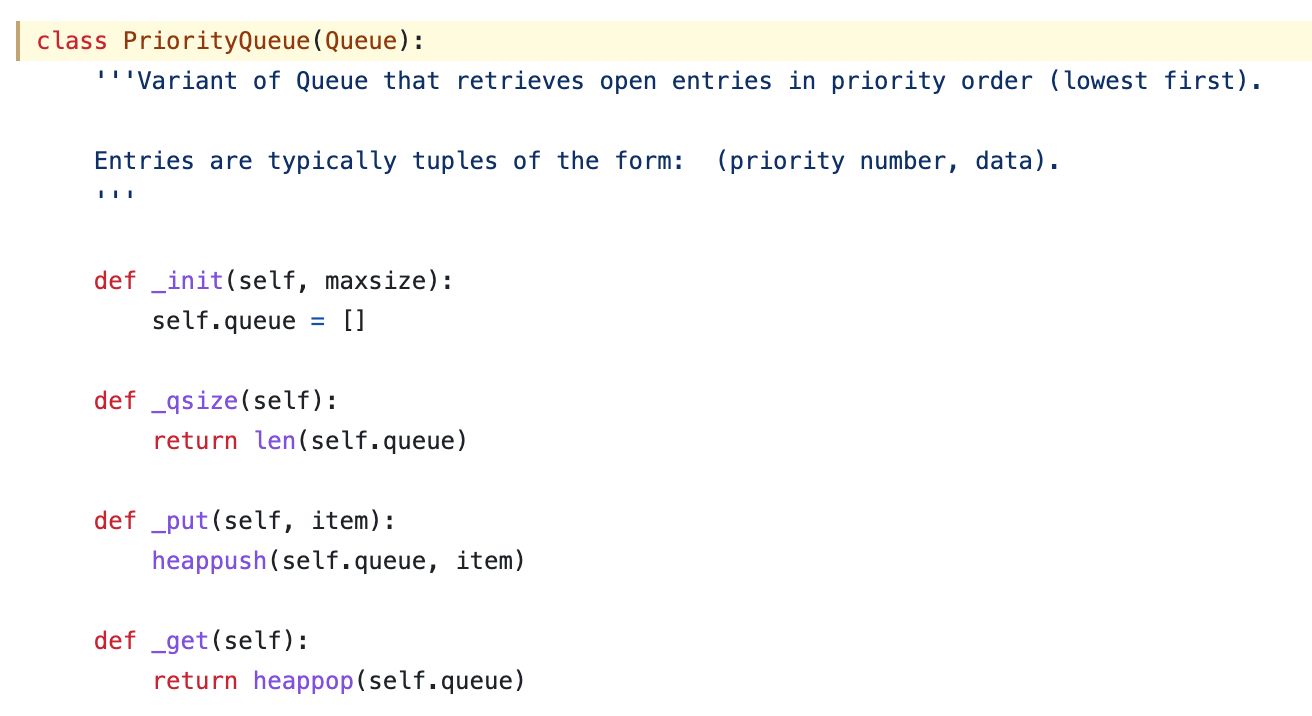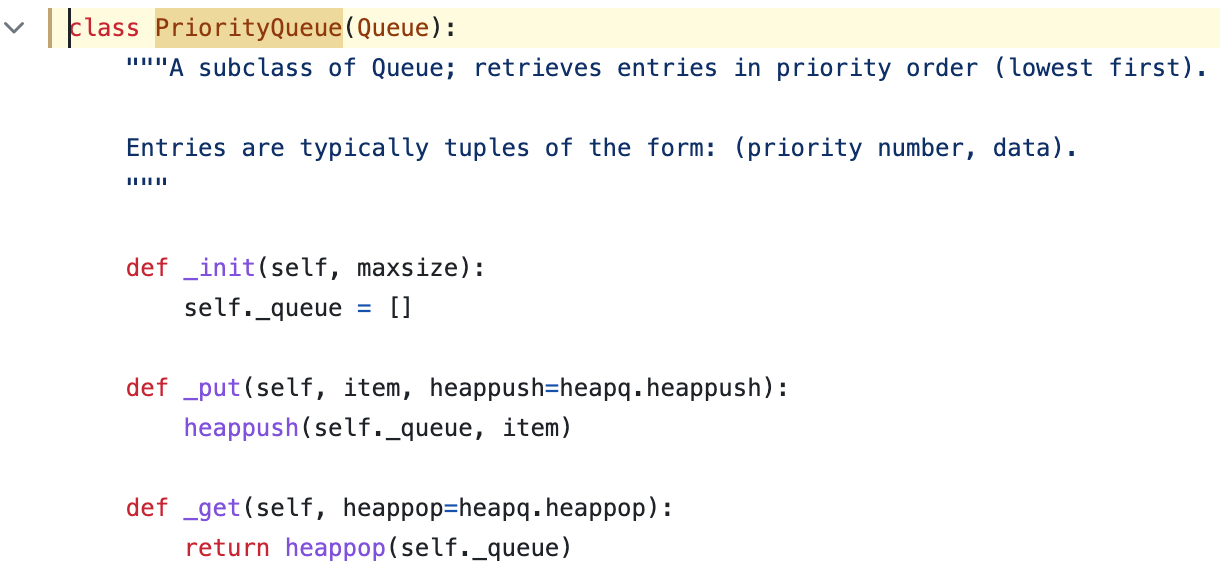- Published on
PriorityQueue and heapq in Python
- Authors

- Name
- Brian
- @gameofby
Similarities and Differences
- heapq是堆算法的python库函数;PriorityQueue是优先队列数据结构对应的类
- queue.PriorityQueue基于heapq实现,加了thread-safety。性能上会慢
- queue.PriorityQueue只有queue的基本操作,没有heapq灵活
heapq
heap[k] <= heap[2*k+1] and heap[k] <= heap[2*k+2]
和textbook上的堆算法有两点不同:
- index从0开始
- 小顶堆。textbook更多是大顶,便于原地排序
这两点使得heap可以基于python的list结构实现
# 初始化空heap
heap = []
# 初始化heap, in-place
heap = [3, 4, 2, 1]
heapq.heapify(heap)
# push、pop
heapq.heappush(heap, 0)
heapq.heapop(heap)
# get smallest element
heap[0]
# sort by heap
def heapsort(iterable):
h = []
for value in iterable:
heappush(h, value)
return [heappop(h) for i in range(len(h))]
heapsort([1, 3, 5, 7, 9, 2, 4, 6, 8, 0])
queue.PriorityQueue
基本使用
from queue import PriorityQueue
# 创建一个优先级队列对象
queue = PriorityQueue()
# 插入元素到队列中
queue.put((2, 'B'))
queue.put((1, 'A'))
queue.put((3, 'C'))
# 从队列中获取具有最高优先级的元素
item = queue.get()
print(item) # 输出:(1, 'A')
# 判断队列是否为空
print(queue.empty()) # 输出:False
# 遍历队列中的元素
while not queue.empty():
item = queue.get()
print(item)
# 输出:
# (2, 'B')
# (3, 'C')
高阶应用
按priority排列,可以将item和priority作为entry输入
Entries are typically tuples of the form: (priority number, data).
h = []
heappush(h, (5, 'write code'))
heappush(h, (7, 'release product'))
heappush(h, (1, 'write spec'))
heappush(h, (3, 'create tests'))
heappop(h)
# PriorityQueue类似
item之间比大小是按照sorted实现的(参考),因此插入元素要可对比。当不可对比时,需要用类包装下原始数据结构,类中实现包含__lt__, __eq__方法
class ListNode:
def __init__(self, val=0, next=None):
self.val = val
# 对不可比的ListNode的类进行包装,提供__lt__方法。 这样SortedLink就可以作为可比元素push到heapq中
class SortedLink(object):
def __init__(self, p):
self.p = p
def __lt__(self, new):
return self.p.val < new.p.val
lists = [
ListNode(3),
ListNode(1),
ListNode(2)
]
q = []
for item in lists:
heapq.heappush(q, SortedLink(item))

